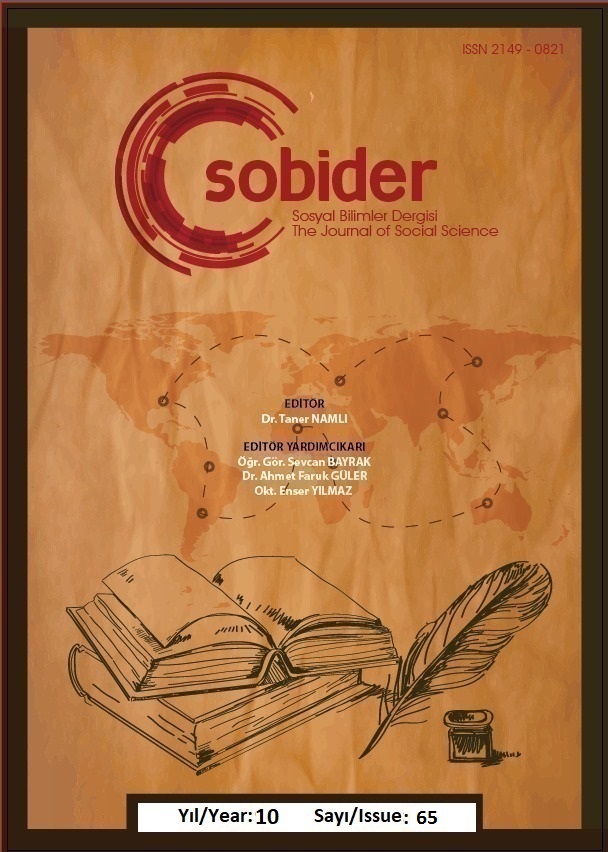AHMET ADNAN SAYGUN’ UN OPUS 38/1 NUMARALI ETÜDÜNÜN RİTİM, FORM VE TONAL-MODAL İLİŞKİ ÖZELLİKLERİNİN İNCELENMESİ
Author :
Abstract
Ahmet Adnan Saygun (1907 - 1991), Türk akademik müziğinin gelişiminde önemli etkisi olan seçkin bir Türk bestecidir. Bu çalışmada, Saygun’un “Aksak Tartılar Üzerine On Etüd” op. 38’in koleksiyonundan birinci etüdün ritim, form ve tonal-modal ilişki özellikleri açısından incelenmiştir. Müzik dilinin belirli unsurlarının baskınlığına bağlı olarak tekrarlanan yedi zamanlı ritmik kalıpların kullanılmasının farklı ostinato tiplerine yol açtığı gözlenmiştir. Ritmik kalıpların varyantlarının kombinasyonu, bağımsız bir anlamı olan yeni bir ölçü birimi görevi gören büyük ölçüler - ritim standartları oluşturmuştur. Ostinato ile birlikte ‘çember’in tonal-modal formunun ve ana tematik materyalin varyasyonunun da önemli biçimlendirici faktörler olarak hareket ettiği gözlenmiştir. Etüdün armonik zenginliği, çeşitli ton, modal ve yapay müzik dizilerinde bulunan kromatik ve diyatoniklerin kontrast bir kombinasyonunda kendini gösterir. Eserin müzik dilinin unsurlarının analizi, algı şemalarının çokluğu hakkında konuşmamıza, yargı hakkını icracıya ve dinleyiciye bırakmamıza izin verir.
Keywords
Abstract
Ahmet Adnan Saygun (1907 - 1991) is an outstanding Turkish composer who had a significant influence on the development of Turkish academic music. The study attempts to study the First Etude from the collection “Ten Études On Aksak Rhythmes” (op. 38/1) from the point of view of the features of rhythm, form and tonal-modal relationships. It is shown that depending on the predominance of certain elements of the musical language, the use of repetitive seven-part rhythmic formulas leads to the appearance of ostinato of different types. The combination of variants of rhythm formulas forms large bars - rhythm standards, acting as a new unit of measurement, having an independent meaning. It is shown that, along with ostinato, the tonal-modal form of the cycle and the variation of the main thematic material also act as important formative factors. The harmonic richness of the etude is manifested in a contrasting combination of chromatics and diatonics, which are in various tonal, modal and artificial musical scales. The analysis of the elements of the musical language of the work allows us to talk about the multiplicity of schemes of its perception, leaving the right of judgment to the performer and the listener.





